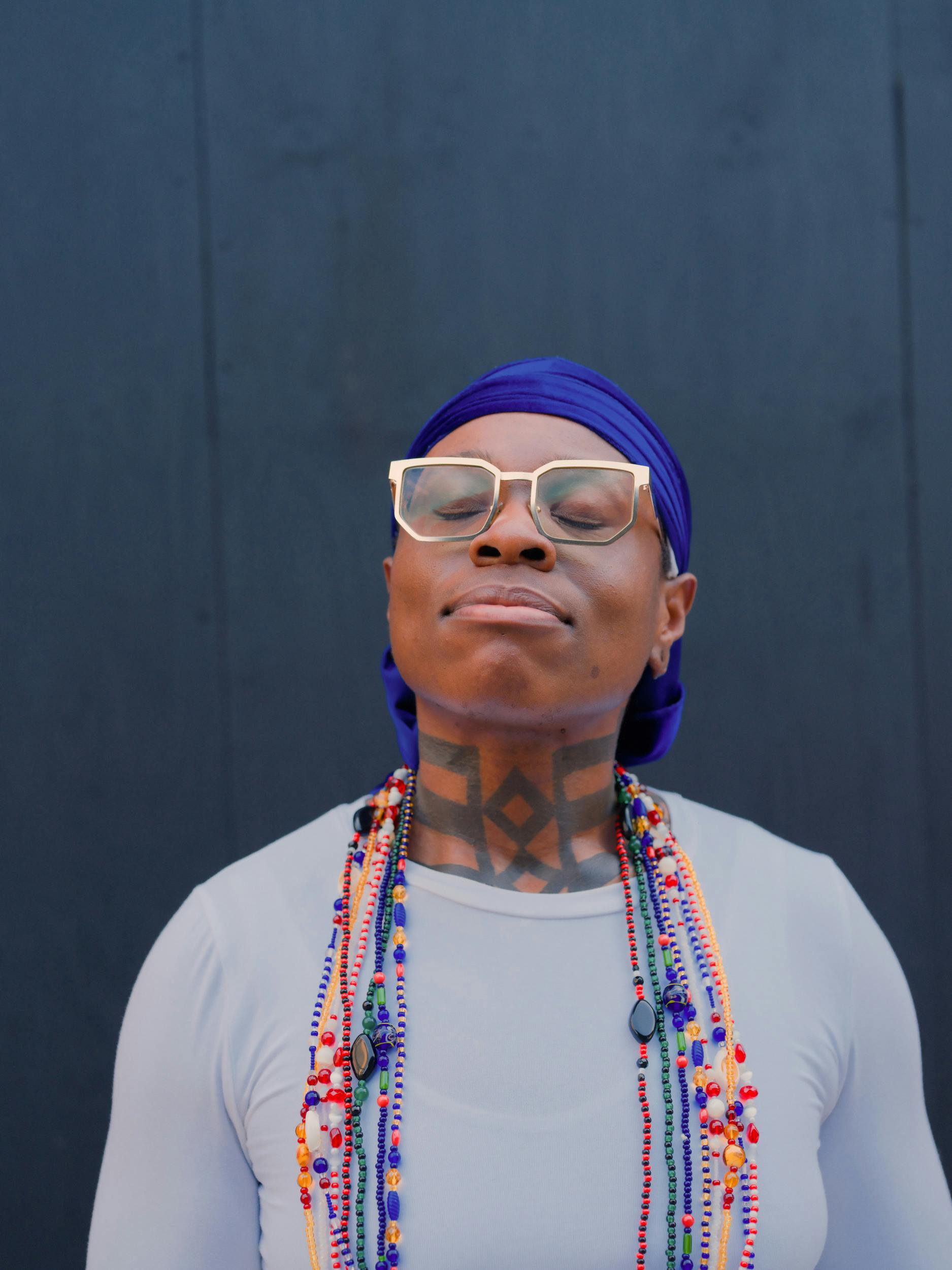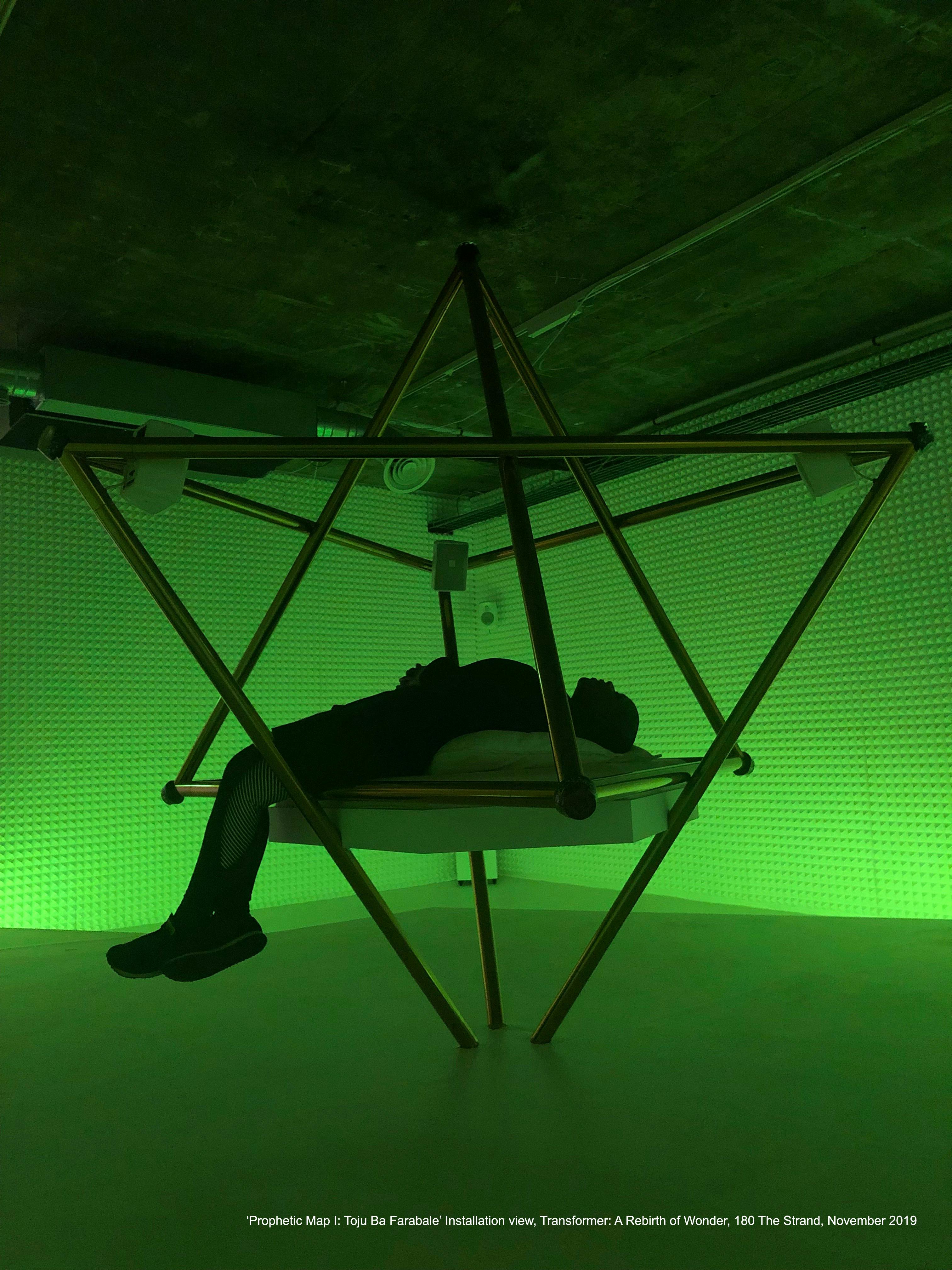Prophetic Map I: Toju Ba Farabale
12 september–2 november 2025

Konsthall C is pleased to showcase artist Evan Ifekoya’s work Prophetic Map I: Toju Ba Farabale within the Sacred Spaces Artistic Program. Sacred Spaces (2024-2026) is a program where artists reflect on spirituality and address questions of religion and society.
Evan Ifekoya’s installation Prophetic Map I: Toju Ba Farabale speaks to the human need for spaces of connection, communion and reflection. The work is named after the Yorùbá proverb, “Toju Ba Farabale” which is translated as “if the eyes are patient, they will see the nose.” In other words, patience begets clarity, reward, and prosperity. Within the Yorùbá tradition, such sayings offer spiritual, moral, and practical guidance and are passed down across generations.
Ifekoya draws on Yorùbá wisdom and tradition to create spaces for ritual and healing. Through a carefully cultivated spiritual practice and harnessed ancestral technologies, Ifekoya constructs immersive experiences of light, sound, silence, and listening that alter the relationship between body, place, and time. Ifekoya grounds their work in the complex cosmology of the Yorùbá tradition, while placing Black and queer consciousness at its forefront.
In the artist’s words: “In the sacredness of the mundane I develop a true and authentic perception of my reality. Thinking through legacy, thinking through genealogy, thinking about belonging. As a Black person, as a Nigerian person - Yorùbá specifically, as a queer person.” (Excerpted from Ojulowo, read more: https://evanifekoya.substack.com/p/ojulowo).

About the artist:
Evan Ifekoya is an interdisciplinary artist whose practice mirrors their role as a spiritual practitioner, perceiving art as a platform for redistributing and renegotiating resources, challenging implicit rules and hierarchies in public and social spaces.
"My art practice is a manifestation of my desire to bring my dream space into reality. Since childhood, music has provided both an antidote and a soundtrack to my experience. Deeply concerned with belief and knowledge systems, I view the body as its own knowledge system. Through portraiture and spatial installations engaging multiple senses, I connect us to deeper aspects of awareness. By drawing on ancestral wisdom and the science of entertainment, I explore the reparative and meditative dimensions of sound.
Harnessing light and reflective surfaces, I explore the nuances of perception- what it means to perceive and be perceived. The architectural interventions I call portal units draw on ancestral technologies to offer a new lens of perception, one that accounts for a specifically queer, neurodivergent experience. My work reflects a continual process of transformation, archiving, and self-exploration. It bridges the gap between the past and the present, ritual and reality and non-linear time - offering new ways to see, feel, and understand the world and our relationship to the natural environment.
Through my art, I hope to foster a deeper sense of connection, belonging, and awareness, creating spaces where liberation and refuge are not just ideals but lived experiences."